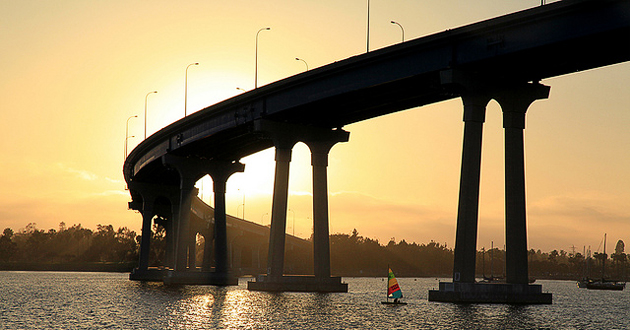See the Sea Rise
A new website demonstrates how coastal habitats may look with higher sea levels.

San Diego’s coastline may lose 35 to 43 percent of its ocean beaches over the next 100 years because of global climate change, according to data gathered by professor Rick Gersberg from the San Diego State Graduate School of Public Health.
To help prepare for potential changes, the San Diego Coastkeeper published a new website demonstrating how the coastline may differ as sea levels rise. The interactive tool displays possible habitat impacts in the year of 2100 at Tijuana River Estuary, San Diego Bay and Mission Bay for sea level rise of 0.4 meters, 1.5 meters and 2 meters.
Online tool maps areas of concern
In making the maps, Gersberg’s lab gathered coastal data for the San Diego coast and integrated it into an Environmental Protection Agency model called Sea Level Affects Marshes Model. The model predicts how 10 of San Diego’s coastal habitats might shift as sea levels change.
Using different sea level-rise scenarios (essentially low, moderate and high sea level rise), the model projects that San Diego’s coastal habitats will look very different over the next 100 years.
“Our model shows that by 2100, San Diego’s coastline may lose 35 to 43 percent of its ocean beaches, 23 percent of its inland freshwater marshes, 42 percent of its tidal freshwater marshes and 51 percent of its brackish water marshes,” said Gersberg.
The data could help decision-makers with future plans for the region.
“Government officials, coastal planners and local residents need the best available data and information to better prepare our region for potential impacts,” said San Diego Coastkeeper staff scientist Jen Kovecses.
Sea level rise adaptation plan
“These potential changes and the consequences to habitat alteration are severe and something that we need to take into consideration today as we make planning decisions,” Gersberg said.
Coastkeeper worked with Gersberg to disseminate the results to local government officials, business people, residents and other interested parties. Ultimately, this information formed part of the foundation for a sea level rise adaptation plan for San Diego Bay.
Through the partnership with Gersberg, San Diego Coastkeeper created the interactive map that displays the model results for some coastal areas and key findings from the model analysis. This map will evolve over time as Gersberg’s lab develops and refines other model results.
Consequently, San Diego Coastkeeper will update the web page with relevant information.
About San Diego Coastkeeper
Founded in 1995, San Diego Coastkeeper protects the region’s bays, beaches, watersheds and ocean for the people and wildlife that depend on them. We balance community outreach, education, and advocacy to promote stewardship of clean water and a healthy coastal ecosystem.
For more information, visit San Diego Coastkeeper.
Related Content


